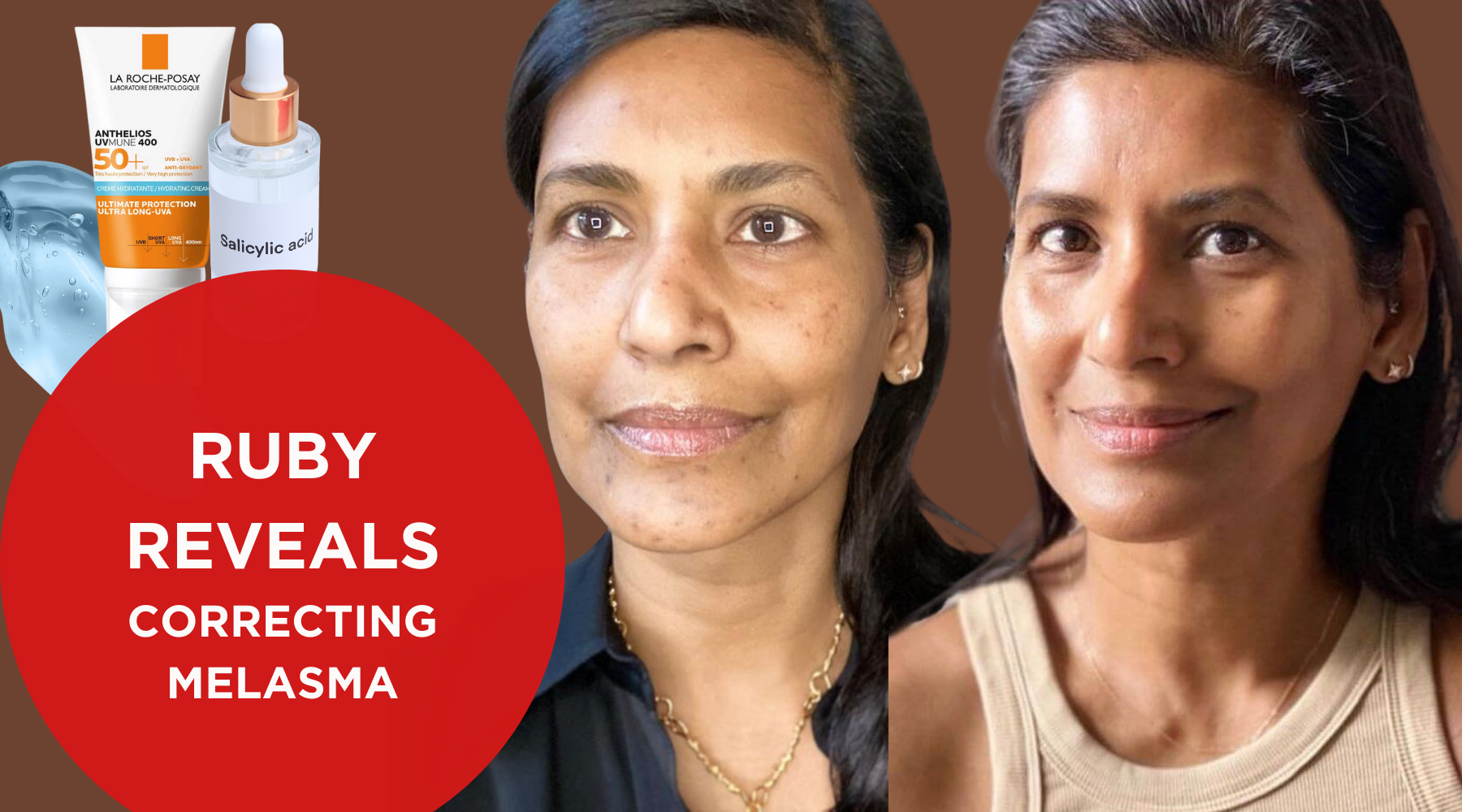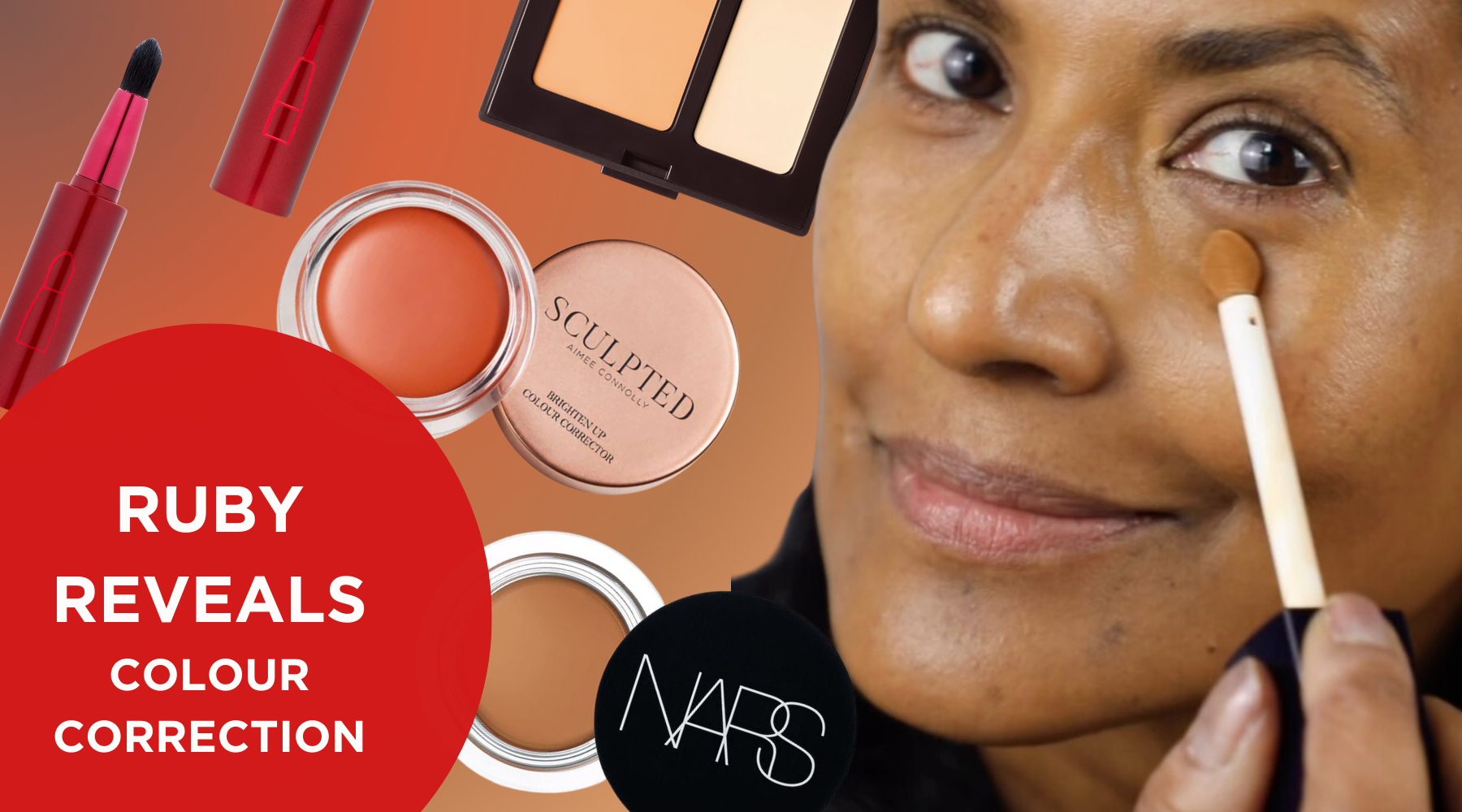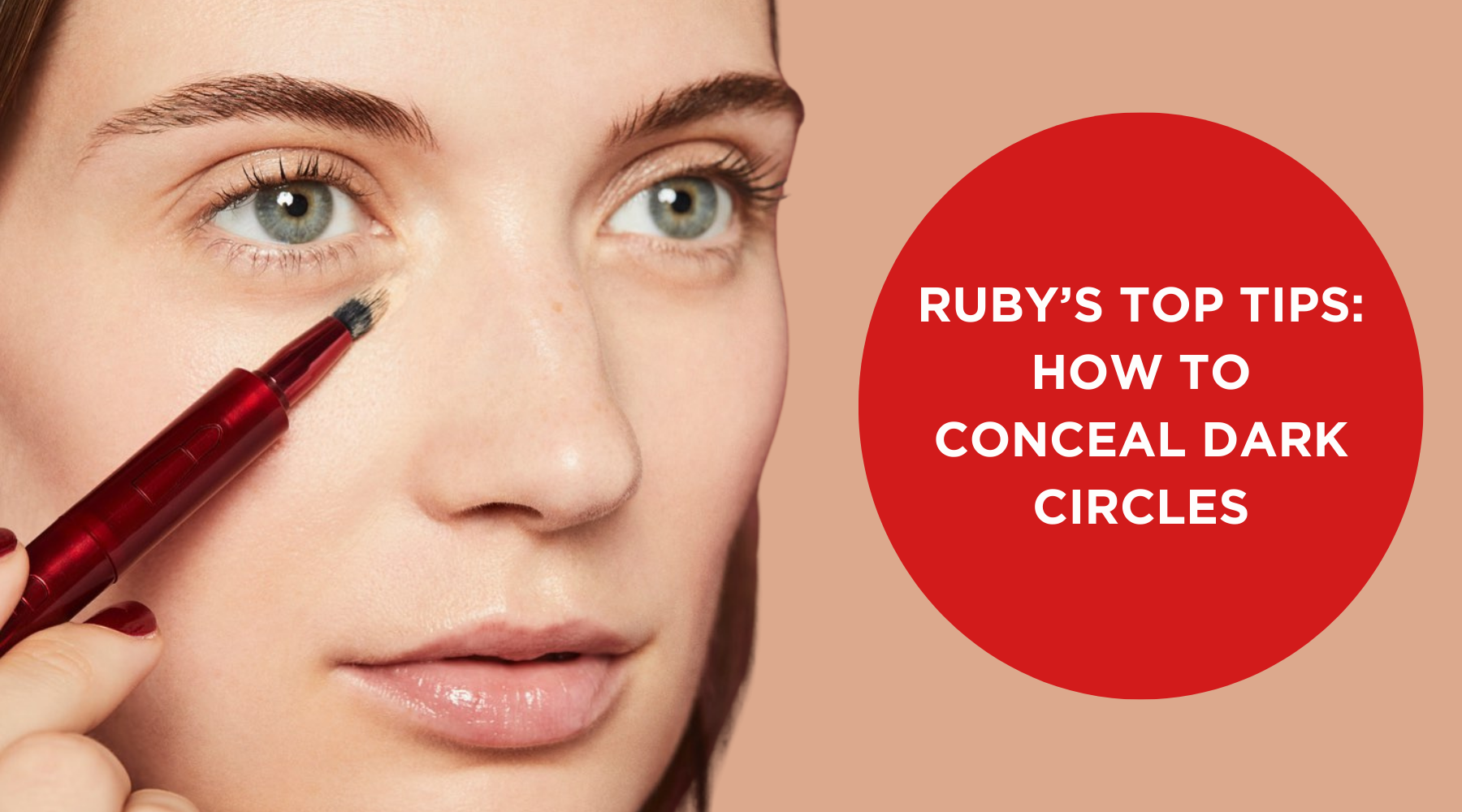
RUBY REVEALS: MANAGING MELASMA
As we get older we often suffer from uneven skintone, whether that's age spots, sunspots, hyperpigmentation or it could be melasma.
Melasma causes light brown, dark brown, and/or blueish/purple patches on the skin and has two main causes: radiation (UV, light infrared) and hormones. Extremely common amongst pregnant or menopausal women. Melasma most commonly affects the face, and whilst it's almost always harmless, it can cause people to feel self-conscious of their appearance.
My biggest top-tip when it comes to Melasma, and the one most commonly ignored, is prevention. Prevention is always much easier than repair!
PREVENTION
Skin damage can occur even on cloudy days, so it's important to always use broad-spectrum sun protection with an SPF of at least 30 (I use 50+ personally). Make it a habit to apply this every day and avoid midday sun.
Opt for skincare which includes vitamin C, niacinamide and/or kojic acid all known for helping the decrease pigment. There are now numerous sunscreens on the market which include these ingredients as standard, i've used Vichy, Loreal and Paula's Choice.
TREATMENT
Speak to an expert
Whenever I have a skin concern my first port of call is to ask an expert. Dermatologists often prescribe topical agents or combination therapy to combat Melasma. They will come up with a treatment plan tailored to your individual skin types and the severity of your Melasma.
Chemical Peels
Peels exfoliate the outer layer of the skin, revealing the fresh, more evenly pigmented layer beneath. Glycolic acid, salicylic acid, and trichloroacetic acid peels are commonly used to improve Melasma. However, this isn't an instant fix and treatments require multiple sessions.
Laser therapy
Laser treatments stimulate collagen production which can lighten Melasma patches, however multiple sessions are usually needed, and it is important to continue using proper sun protection post-treatment to prevent recurrence.
CONCEALING
All skin is beautiful, but I wholeheartedly understand that there are times that you may want to conceal your melasma, particularly when it is on your face. The key to natural looking cover is to avoid being heavy handed, prep your skin and setting your products in place.
Skin Prep
Keep your skincare routine simple, opting for products that will work harder for you. Too many layers in addition to makeup can increase the chances of makeup looking cakey, bringing attention to the areas you are trying to conceal.
And don't forget to leave a beat before applying makeup over skin-care.
Colour Correct
Neutralise any discolouration with a colour corrector. Depending on the strength of the dark patches peach, orange or red toned correctors with help to counteract the brown patches. Using a precision brush or your fingers, tap the corrector into the skin, blending out the edges to avoid harsh lines. Once your corrector is in place, follow up with a concealer that matches your skin tone. Using veil like layers, slowly build up to your desired coverage patting the product into the skin rather than rubbing (and shifting the corrector underneath).
Set
Don't forget to set your makeup... I've recently heard people saying that they couldn't use powders to set their makeup as it is ageing and prone to cracking. This is definitely not the case with modern formulations which now include flexible particles and hydrating ingredients. Apply a light sweep of translucent setting powder and it will prevent your makeup from shifting throughout the course of the day (or night).
Correcting Melasma doesn't happen overnight and requires patience and consistency. Results won't be immediate, so it's essential to stick to your treatment plan and stay consistent with sun protection. Remember, each skin journey is different, and all skin is beautiful ♥️



Leave a comment
This site is protected by hCaptcha and the hCaptcha Privacy Policy and Terms of Service apply.